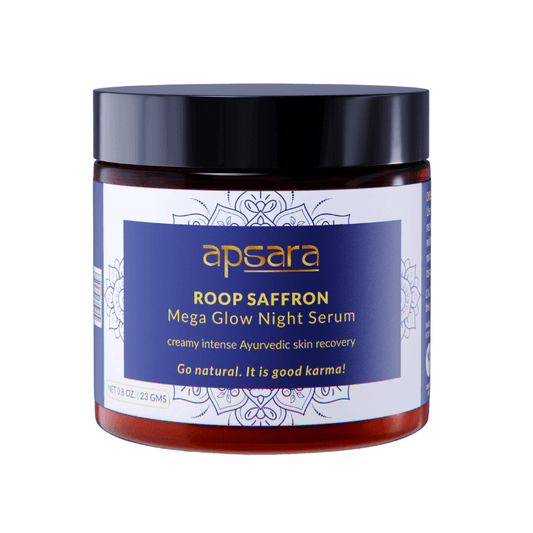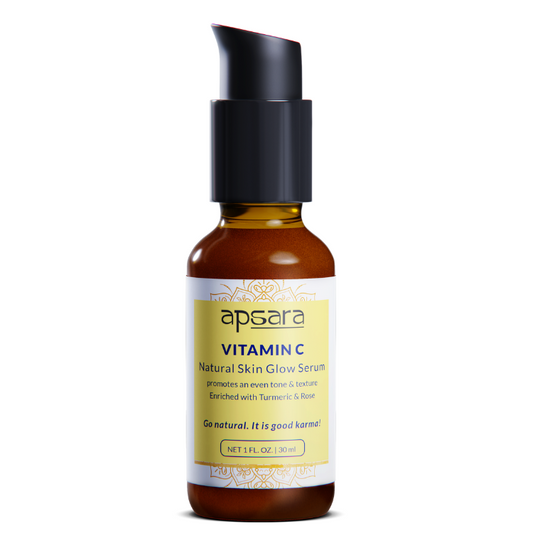
By: Marty S.
Home remedies by Sheetal Rawal, Scientist (human genetics) & Founder of Apsara Skin Care
Have you ever looked at yourself in the mirror for so long that you wish you had a new face? Don’t worry, we’ve all been there before. It’s not that we think we’re ugly; it’s just that it is so easy to get discouraged by all of the imperfections on our skin, whether it’s acne, wrinkles, dark spots, et cetera. Sometimes it feels like it would be far easier to have a new face rather than work tirelessly on our current one. However, what if we were to tell you that you had the power to sculpt your face into a new one, using natural ingredients found at home? To accomplish this feat, you will need to use an acid peel.
Continue reading to learn how to make 3 homemade anti-aging peels for dewy, youthful, and glowing skin. Conventional acid peels, ones that you would normally find at a spa, are too harsh on your skin and may do more harm than good because they rely on a lot of harsh chemicals. These 3 natural acid peels though are much more suitable towards your skin and can help you get the ageless complexion you've always wanted.
1. Brown Sugar Glycolic Acid Peel to Exfoliate Your Skin & Diminish Lines, Wrinkles
In order to make a natural acid peel, we must harness the power of alpha hydroxy acids, which are compounds that are known to have anti-aging benefits. One of the most common alpha hydroxy acids in skin care is glycolic acid. You can find glycolic acid under the ingredients list of many skin care products, and it is even used within the names of said products. The reason why glycolic acid is so popular is that it has exfoliating and anti-aging properties. Due to its small molecular size, glycolic acid can deeply penetrate your skin and help dislodge dead skin cells from the uppermost layers. This effect significantly improves cell turnover, allowing newer, glowing, youthful, and dewy skin cells to surface. Because of this, glycolic acid has garnered a superb reputation for being able to diminish the appearance of lines and wrinkles as well as minimize scarring.
Although it might sound like it is manufactured, glycolic acid is actually derived from a natural source, which is sugarcane. Thus, if you want to incorporate glycolic acid into your skin care routine, you must try brown sugar. Not only is it a far better natural ingredient to use than white sugar, but brown sugar also has a texture that helps with the anti-aging process. Brown sugar is composed of tiny crystals that can gently exfoliate your skin.
Ingredients
1 tbsp. of powdered brown sugar
5 drops of Vitamin E oil
1 tsp. of rice flour
Water, as needed
Instructions
Mix the brown sugar, Vitamin E oil, and rice flour together. Add enough water to the mixture until you get a paste.
Apply the peel and leave it on for 12 to 15 minutes.
Wash it off with warm water. Follow with your toner, serum, and lotion.
Use 1 to 2 times a week.
Notes
If you want more glycolic acid peel home remedies, click here.
Related: Arturo's favorite Apsara products.
2. Lemon Juice Citric Acid Peel for Glowing, Even Skin
Another fairly well-known alpha hydroxy acid is citric acid. Similar to glycolic acid, citric acid can exfoliate your skin so that it looks more glowing, youthful, and dewy. However, there are a few benefits associated with citric acid that makes it stand out. First, citric acid has antioxidant properties; by nourishing your skin with antioxidants, you can neutralize free radical damage and decrease your risk of premature aging. Second, citric acid can reduce discoloration and brighten up your skin, which is why it is believed to be better than glycolic acid in that regard.
As you might have guessed, citric acid is derived from citrus fruits, the most common being lemons, limes, and oranges. However, because of the acidic nature of these fruits, using these fruits alone for their skin benefits is definitely not recommended. Applying any undiluted citrus juice on your skin may irritate it and cause dryness or redness; for some, citric acid might increase your sun sensitivity. As a result, dilute any citrus juice with water or add it to a home remedy before using it on your skin.
Ingredients
1/2 tsp. of fresh lemon juice
1/8 tsp. of turmeric powder
1 tbsp. of fuller's earth or bentonite clay
Aloe juice, as needed
Instructions
Mix the lemon juice, turmeric, and clay of your choice together. Add enough aloe juice to the mixture until you get a thick paste.
Apply the peel and leave it on for 12 to 15 minutes.
Wash it off with warm water. Follow with a daily skin care routine based on your skin type. Click here to find out what your skin type is.
Use 1 to 2 times a week.
3. Anti-Aging Apple Juice Malic Acid Peel for Soft, Dewy Skin
While malic acid may not be as familiar to you as glycolic acid or citric acid, if you’ve ever eaten an apple or drank apple juice before (one of the best sources of this compound), you should know that you’ve come into contact with malic acid at some point in your life. In addition to its exfoliation benefits, malic acid is thought to have humectant properties. Humectants draw moisture towards your skin so using a malic acid peel on your skin can ensure that your skin stays moisturized and dewy.
Ingredients
1 tsp. of fresh apple juice
1 tbsp. of applesauce
Oat flour, as needed
Instructions
Mix the apple juice and applesauce together. Sprinkle in enough oat flour to the mixture until you get a thick paste.
Apply the peel and leave it on for 12 to 15 minutes.
Wash the peel off with warm water. Then, use your daily skin care routine.
Use 1 to 2 times a week.
Related: Homemade acid peel DIY for glowing, even skin.
If you need personalized skin or hair care advice, fill out this form to get personalized skin or hair care advice.
Go natural. It is good karma!







